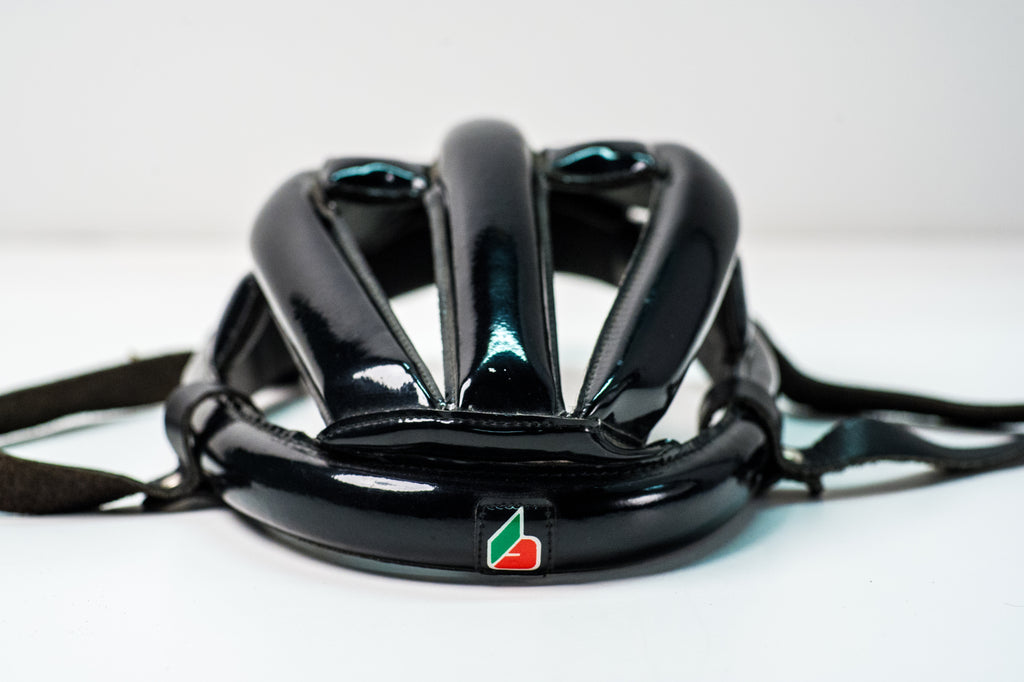"Patent Leather Magic" by Joe Parkin May 07 2019
Former professional cyclist and published author Joe Parkin shares his memories of the iconic Brancale leather hairnet helmet...

It was early fall, 1990, in Dublin, Ireland. I had just finished the final stage of the Tour of Ireland and was collecting myself a little, off away from the crowds and the other riders. I’d gone for the long breakaway — me and Irish rider Martin Early — but our bid had been shut down by one of the other teams. There wasn’t too much time to think about what could have been, though, before I was mobbed by some young boys looking for souvenirs.
They took the race numbers off my back and the bottle I hadn’t tossed away in the finale. I’d already had an Avocet cyclometer stolen earlier in the week, so I was pretty protective of the new one, but they did ask for it. They even asked for my jersey and shoes. I think they would’ve taken my shorts and socks if I’d offered.
And then one of them asked for my helmet.
I only paused for a few seconds. Sure. Why not? As the clock ticked down on the season, the retirement of this particular helmet was inevitable, because the UCI’s new rule requiring pros to wear hardshell helmets was coming. The hairnet was about to become yesterday’s equipment. The straps were salt crusted and the buckle was rusting. In the moment, I wasn’t really feeling all that sentimental.
Thinking about it in today’s terms, why would you be sentimental about a helmet? Unless it was lovingly hand painted for some special event, or perhaps the first of a model that you rode to victory in the Tour de France, it is hard to see feeling much about a helmet. Most modern helmets are over-sculpted devices that are meant to be replaced after every crash and at least once a season. In fact, I find the most recent models to be design atrocities more disgusting than even the first hardshell bicycle helmets.
But that day in Ireland was a different time. In the hairnet days, you bought your own helmet and, in many cases, you kept it for several years. Most were black or white — mostly black — and they went with any team kit in the peloton. And they were optional in several countries, so the teams rarely got involved when it came to helmets.
When I first arrived in Belgium, I was packing a cheap, black, vinyl Cinelli hairnet that had over-pronounced temple-protection straps. Or at least that’s what I thought they were designed for. It was a backup only. Ever since I laid eyes on my first Graham Watson photograph, I knew I had to have one of the shiny, patent-leather models with the Brancale logo. It took a couple bike shop visits and a fair bit of sign language, but I managed to find one — size 58. And when I strapped it on for the very first time in a race, I felt like I had officially arrived. I was a bike racer.
From that first race in Belgium to the fall day in Dublin a few years later, that Brancale hairnet traveled with me to every event. I loved to race without a helmet in France, Spain and Italy, back when you could do that, but the helmet always came with me. With it, I rode the amateur version of Paris-Roubaix in 1987, surviving crashes, flats, broken wheels, rain, mud, cobblestones and my first ride on a velodrome. Helmets were optional for pros in France but I wore it again at the Hell of the North in 1988 on my way to becoming the race’s youngest finisher. And I am wearing it proudly, front and center, as I drag the entire field past the start-finish line, in a Graham Watson photo from the 1988 World Championship in Ronse, Belgium.

That helmet stayed with me through countless crashes and hundreds of Kermis races. It endured beer showers and champagne spray, rain and hail, cow shit, horse shit and pig shit — a lot of pig shit. From time to time I would pick up a Saint Christopher medal and sew it to the square little Brancale logo patch in the front. Other times I would put a Chiquita Banana sticker in the same place. I never started a race without first ensuring that the patent leather and straps had been wiped clean.
To be honest, I knew nothing about Brancale’s history at the time, and I really didn’t care. For me it was that logo and the helmet’s shape and shine. I’d seen it in the magazine pictures I’d looked at before going to Europe to become a real bike racer. The guys in those pictures, they were real bike racers and I wanted to be just like them.
We started the ’91 racing season in hardshells, but sit-down strikes at several races managed to overturn the rule. Perhaps needless to say, I regretted giving away my Brancale. I’m not much for memorabilia, so I really don’t pine to have that old hairnet displayed on a shelf somewhere in my house, but it is fun to see myself in photos from the days when socks were white and helmets seemed mostly to be decoration.
No, you won’t see me riding around anytime soon in a hairnet. Every once in a while, though, when I see or hear stories of all of these broken helmets, I think back to my shiny Brancale: Hundreds of races, and I can’t even begin to remember how many crashes, but it only hit the ground once. One time. Maybe there was magic in it.
Joe Parkin is a former professional cyclist and the author of “A Dog in a Hat: An American Bike Racer’s Story of Mud, Drugs, Blood, Betrayal, and Beauty in Belgium” and “Come and Gone: A True Story of Blue-Collar Bike Racing in America.”
Photo credit: Graham Watson
